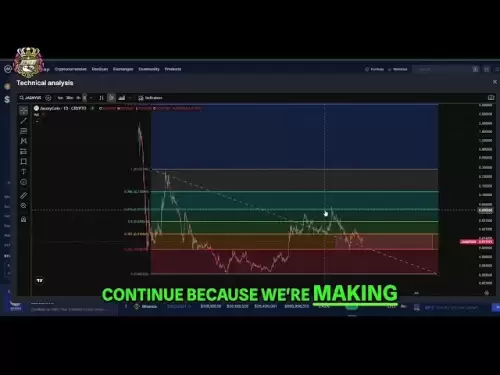-
 Bitcoin
Bitcoin $108,017.2353
-0.81% -
 Ethereum
Ethereum $2,512.4118
-1.58% -
 Tether USDt
Tether USDt $1.0002
-0.03% -
 XRP
XRP $2.2174
-1.03% -
 BNB
BNB $654.8304
-0.79% -
 Solana
Solana $147.9384
-1.76% -
 USDC
USDC $1.0000
-0.01% -
 TRON
TRON $0.2841
-0.76% -
 Dogecoin
Dogecoin $0.1636
-2.09% -
 Cardano
Cardano $0.5726
-1.72% -
 Hyperliquid
Hyperliquid $39.1934
1.09% -
 Sui
Sui $2.9091
-0.59% -
 Bitcoin Cash
Bitcoin Cash $482.1305
0.00% -
 Chainlink
Chainlink $13.1729
-1.54% -
 UNUS SED LEO
UNUS SED LEO $9.0243
-0.18% -
 Avalanche
Avalanche $17.8018
-1.90% -
 Stellar
Stellar $0.2363
-1.69% -
 Toncoin
Toncoin $2.7388
-3.03% -
 Shiba Inu
Shiba Inu $0.0...01141
-1.71% -
 Litecoin
Litecoin $86.3646
-1.98% -
 Hedera
Hedera $0.1546
-0.80% -
 Monero
Monero $311.8554
-1.96% -
 Dai
Dai $1.0000
-0.01% -
 Polkadot
Polkadot $3.3473
-2.69% -
 Ethena USDe
Ethena USDe $1.0001
-0.01% -
 Bitget Token
Bitget Token $4.3982
-1.56% -
 Uniswap
Uniswap $6.9541
-5.35% -
 Aave
Aave $271.7716
0.96% -
 Pepe
Pepe $0.0...09662
-1.44% -
 Pi
Pi $0.4609
-4.93%
What is the difference between a private key and a mnemonic phrase in Trust Wallet?
In Trust Wallet, private keys sign transactions while mnemonic phrases recover wallets; both are crucial for securing your crypto assets.
Apr 12, 2025 at 08:43 pm

In the world of cryptocurrencies, securing your digital assets is paramount. Trust Wallet, a popular mobile wallet, offers multiple ways to manage and secure your funds, including the use of private keys and mnemonic phrases. Understanding the difference between these two security measures is crucial for any crypto user. This article delves into the specifics of private keys and mnemonic phrases in Trust Wallet, explaining their functions, how they are used, and their importance in safeguarding your digital assets.
What is a Private Key?
A private key is a crucial element in the world of cryptocurrencies. It is a long string of characters that serves as a digital signature, allowing you to access and manage your funds. In Trust Wallet, the private key is generated when you create a new wallet or import an existing one.
- Functionality: The private key is used to sign transactions, proving ownership of the funds you wish to move. Without the private key, you cannot access or transfer your cryptocurrencies.
- Security: It is vital to keep your private key confidential. If someone else gains access to your private key, they can control your funds.
- Storage: Trust Wallet does not store your private key on its servers; instead, it is stored locally on your device. You can export the private key for backup purposes, but it should be done securely.
What is a Mnemonic Phrase?
A mnemonic phrase, also known as a seed phrase or recovery phrase, is a set of words generated when you create a new wallet. This phrase is used to recover your wallet and access your funds if you lose your device or need to restore your wallet on a different device.
- Functionality: The mnemonic phrase can be used to restore your wallet on any compatible wallet software. It contains all the information needed to regenerate your private keys.
- Security: Like the private key, the mnemonic phrase must be kept secret. Anyone with access to your mnemonic phrase can restore your wallet and control your funds.
- Storage: It is recommended to write down the mnemonic phrase and store it in a secure location, such as a safe or a secure note-taking app. Never store it digitally where it could be hacked.
How to Access Your Private Key in Trust Wallet
Accessing your private key in Trust Wallet is a straightforward process, but it should be done with caution. Here are the steps to follow:
- Open Trust Wallet: Launch the Trust Wallet app on your device.
- Navigate to Settings: Tap on the settings icon, usually located in the top right corner of the screen.
- Select Wallets: Scroll down and select the "Wallets" option.
- Choose Your Wallet: Tap on the wallet for which you want to access the private key.
- Show Private Key: Scroll down and tap on "Show Private Key." You may be prompted to enter your device's security code or biometric authentication.
- View and Export: Your private key will be displayed. You can copy it or export it to a secure location.
How to Access Your Mnemonic Phrase in Trust Wallet
Accessing your mnemonic phrase in Trust Wallet is also a simple process, but it requires careful handling. Here are the steps to follow:
- Open Trust Wallet: Launch the Trust Wallet app on your device.
- Navigate to Settings: Tap on the settings icon, usually located in the top right corner of the screen.
- Select Wallets: Scroll down and select the "Wallets" option.
- Choose Your Wallet: Tap on the wallet for which you want to access the mnemonic phrase.
- Show Recovery Phrase: Scroll down and tap on "Show Recovery Phrase." You may be prompted to enter your device's security code or biometric authentication.
- View and Write Down: Your mnemonic phrase will be displayed. Write it down carefully and store it in a secure location.
Differences Between Private Key and Mnemonic Phrase
While both the private key and the mnemonic phrase are essential for securing your cryptocurrencies, they serve different purposes and have distinct characteristics.
- Purpose: The private key is used to sign transactions and directly access your funds, whereas the mnemonic phrase is used to recover your wallet and regenerate your private keys.
- Format: A private key is a long string of characters, typically in hexadecimal format. A mnemonic phrase is a set of words, usually 12 or 24 words, that are easier to remember and write down.
- Usage: You use the private key to interact with the blockchain directly, while the mnemonic phrase is used to restore your wallet on a different device or recover it if your device is lost or damaged.
- Security: Both are highly sensitive pieces of information, but the mnemonic phrase is considered more critical for long-term security because it can regenerate all your private keys.
Importance of Both in Trust Wallet
Both the private key and the mnemonic phrase play vital roles in securing your digital assets in Trust Wallet. Understanding their importance can help you manage your cryptocurrencies more effectively.
- Private Key: It is the direct link to your funds. Losing your private key means you lose access to your cryptocurrencies. Therefore, it is crucial to back up your private key securely and never share it with anyone.
- Mnemonic Phrase: It is your lifeline if you lose access to your wallet. By securely storing your mnemonic phrase, you can restore your wallet and regain access to your funds. It is essential to keep it in a safe place and never share it with anyone.
Frequently Asked Questions
Q: Can I use the same mnemonic phrase for multiple wallets in Trust Wallet?
A: No, each wallet in Trust Wallet has its own unique mnemonic phrase. Using the same mnemonic phrase for multiple wallets would compromise the security of your funds.
Q: What should I do if I lose my private key but have my mnemonic phrase?
A: If you lose your private key but have your mnemonic phrase, you can restore your wallet using the mnemonic phrase. This will regenerate your private key, allowing you to access your funds again.
Q: Is it safe to store my mnemonic phrase digitally?
A: It is generally not recommended to store your mnemonic phrase digitally, as it could be vulnerable to hacking. If you must store it digitally, use a highly secure, encrypted storage solution.
Q: Can I change my private key or mnemonic phrase in Trust Wallet?
A: You cannot change your private key or mnemonic phrase directly in Trust Wallet. If you need to change them, you would need to create a new wallet and transfer your funds to the new wallet.
Disclaimer:info@kdj.com
The information provided is not trading advice. kdj.com does not assume any responsibility for any investments made based on the information provided in this article. Cryptocurrencies are highly volatile and it is highly recommended that you invest with caution after thorough research!
If you believe that the content used on this website infringes your copyright, please contact us immediately (info@kdj.com) and we will delete it promptly.
- PEPE, BONK, and Remittix: Meme Coins Meet Real-World Utility
- 2025-07-06 02:30:13
- Score Big This Weekend with BetMGM Bonus Code for MLB Games
- 2025-07-06 02:50:13
- PENGU Token's eToro Debut and Weekly Surge: What's Driving the Hype?
- 2025-07-06 02:30:13
- Singapore's Crypto Crackdown: Laundering, Licenses, and Lessons
- 2025-07-06 02:50:13
- Royal Mint Coins: Unearthing the Rarest Queen Elizabeth II Treasures
- 2025-07-06 00:30:12
- BlockDAG, SEI, and HYPE: Decoding the Crypto Buzz in the Big Apple
- 2025-07-06 00:50:13
Related knowledge
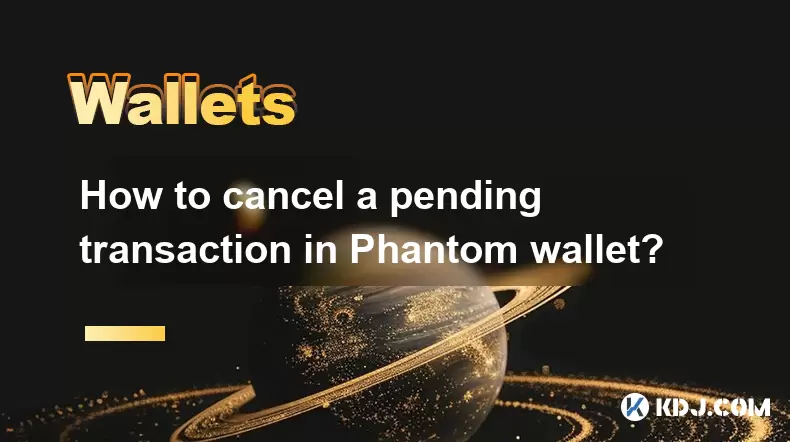
How to cancel a pending transaction in Phantom wallet?
Jul 03,2025 at 07:21pm
Understanding Pending Transactions in Phantom WalletA pending transaction in the Phantom wallet occurs when a user initiates a transfer or interaction with the Solana blockchain, but it hasn't yet been confirmed by the network. This can happen due to various reasons such as low transaction fees, network congestion, or incorrect gas settings. It's import...
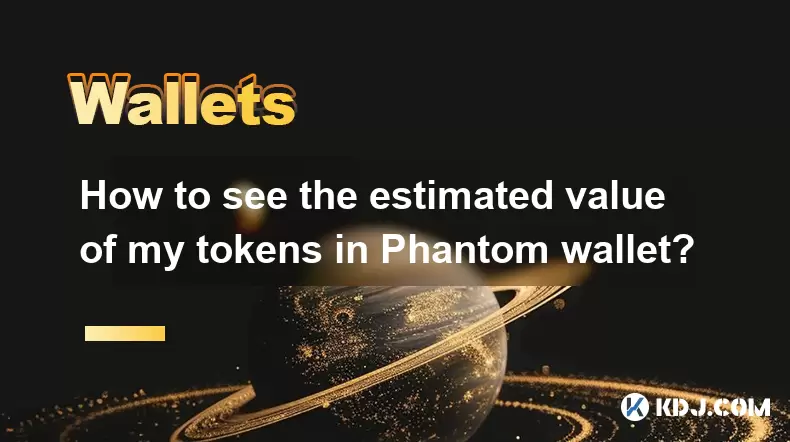
How to see the estimated value of my tokens in Phantom wallet?
Jul 04,2025 at 12:21am
What is Phantom Wallet?Phantom wallet is one of the most popular cryptocurrency wallets designed for the Solana blockchain. It allows users to store, send, receive, and manage various tokens built on Solana, including SPL tokens and NFTs. The wallet offers a user-friendly interface, making it accessible for both beginners and advanced users in the crypt...
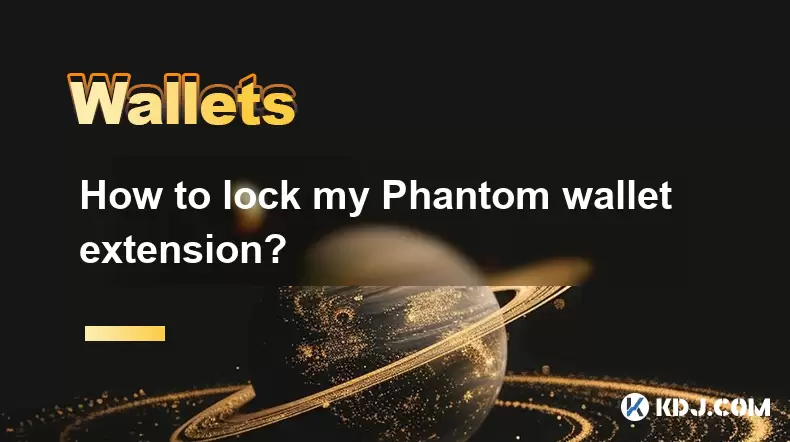
How to lock my Phantom wallet extension?
Jul 03,2025 at 11:14am
What Is the Phantom Wallet and Why Lock It?The Phantom wallet is a popular non-custodial cryptocurrency wallet designed for interacting with the Solana blockchain. Supporting both browser extensions and mobile apps, Phantom allows users to store, send, receive, and stake SOL tokens, as well as interact with decentralized applications (dApps). Securing y...

Does Phantom wallet offer two-factor authentication (2FA)?
Jul 03,2025 at 09:00am
Understanding Phantom Wallet and Its Security FeaturesPhantom wallet is a widely used non-custodial cryptocurrency wallet that supports the Solana blockchain. It allows users to store, send, receive, and interact with decentralized applications (dApps) seamlessly. As security is a top priority for any crypto wallet user, security features like two-facto...
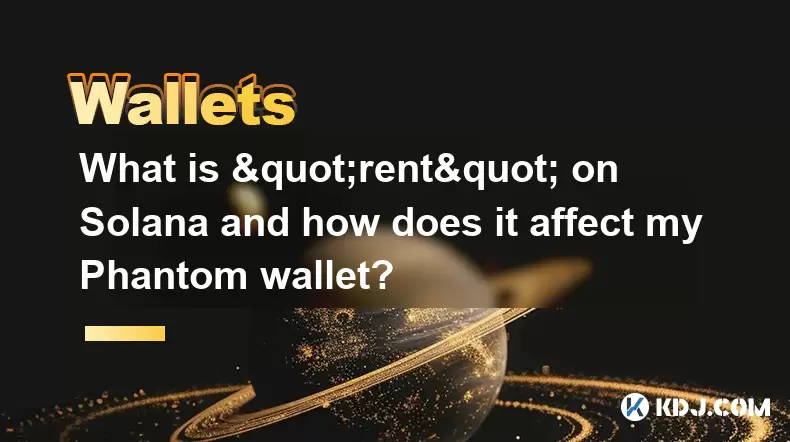
What is "rent" on Solana and how does it affect my Phantom wallet?
Jul 02,2025 at 08:35pm
Understanding 'Rent' on SolanaIn the context of Solana, the term 'rent' refers to a storage fee that users pay for maintaining data on the blockchain. Unlike Ethereum, where storage costs are paid once via gas fees during contract deployment, Solana implements a recurring cost model to ensure efficient usage of network resources. This means that any acc...
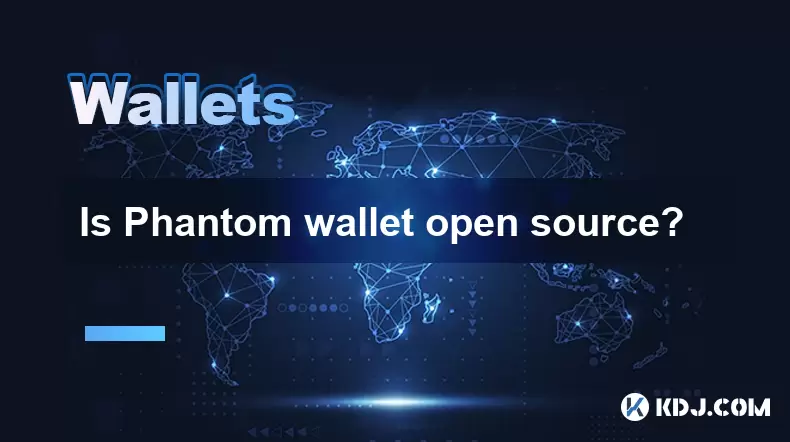
Is Phantom wallet open source?
Jul 03,2025 at 12:29am
What is Phantom Wallet?Phantom wallet is a non-custodial cryptocurrency wallet primarily designed for the Solana blockchain. It allows users to store, send, receive, and interact with decentralized applications (dApps) on the Solana network. The wallet is available as a browser extension and mobile application, offering a seamless experience for both be...

How to cancel a pending transaction in Phantom wallet?
Jul 03,2025 at 07:21pm
Understanding Pending Transactions in Phantom WalletA pending transaction in the Phantom wallet occurs when a user initiates a transfer or interaction with the Solana blockchain, but it hasn't yet been confirmed by the network. This can happen due to various reasons such as low transaction fees, network congestion, or incorrect gas settings. It's import...

How to see the estimated value of my tokens in Phantom wallet?
Jul 04,2025 at 12:21am
What is Phantom Wallet?Phantom wallet is one of the most popular cryptocurrency wallets designed for the Solana blockchain. It allows users to store, send, receive, and manage various tokens built on Solana, including SPL tokens and NFTs. The wallet offers a user-friendly interface, making it accessible for both beginners and advanced users in the crypt...

How to lock my Phantom wallet extension?
Jul 03,2025 at 11:14am
What Is the Phantom Wallet and Why Lock It?The Phantom wallet is a popular non-custodial cryptocurrency wallet designed for interacting with the Solana blockchain. Supporting both browser extensions and mobile apps, Phantom allows users to store, send, receive, and stake SOL tokens, as well as interact with decentralized applications (dApps). Securing y...

Does Phantom wallet offer two-factor authentication (2FA)?
Jul 03,2025 at 09:00am
Understanding Phantom Wallet and Its Security FeaturesPhantom wallet is a widely used non-custodial cryptocurrency wallet that supports the Solana blockchain. It allows users to store, send, receive, and interact with decentralized applications (dApps) seamlessly. As security is a top priority for any crypto wallet user, security features like two-facto...

What is "rent" on Solana and how does it affect my Phantom wallet?
Jul 02,2025 at 08:35pm
Understanding 'Rent' on SolanaIn the context of Solana, the term 'rent' refers to a storage fee that users pay for maintaining data on the blockchain. Unlike Ethereum, where storage costs are paid once via gas fees during contract deployment, Solana implements a recurring cost model to ensure efficient usage of network resources. This means that any acc...

Is Phantom wallet open source?
Jul 03,2025 at 12:29am
What is Phantom Wallet?Phantom wallet is a non-custodial cryptocurrency wallet primarily designed for the Solana blockchain. It allows users to store, send, receive, and interact with decentralized applications (dApps) on the Solana network. The wallet is available as a browser extension and mobile application, offering a seamless experience for both be...
See all articles





















